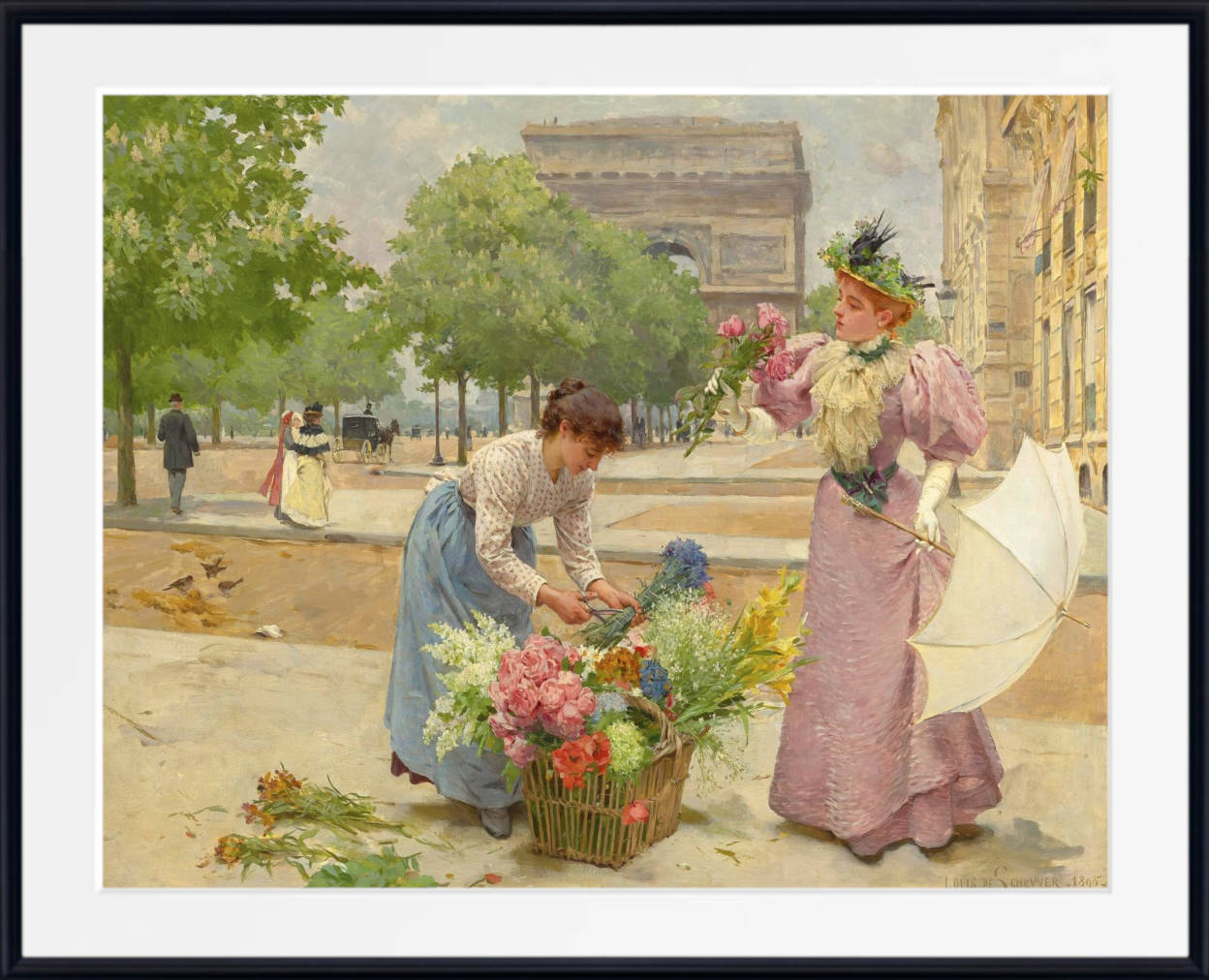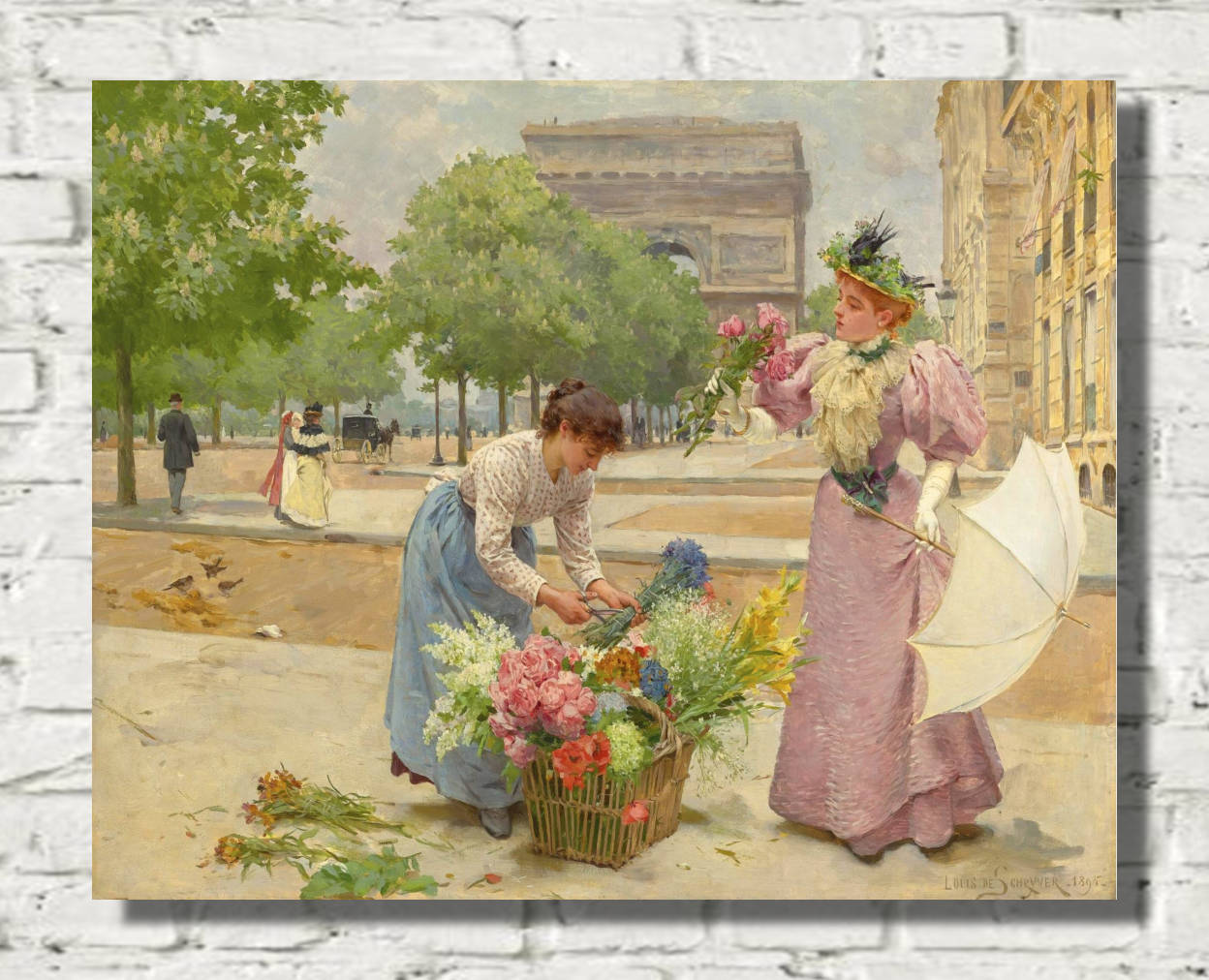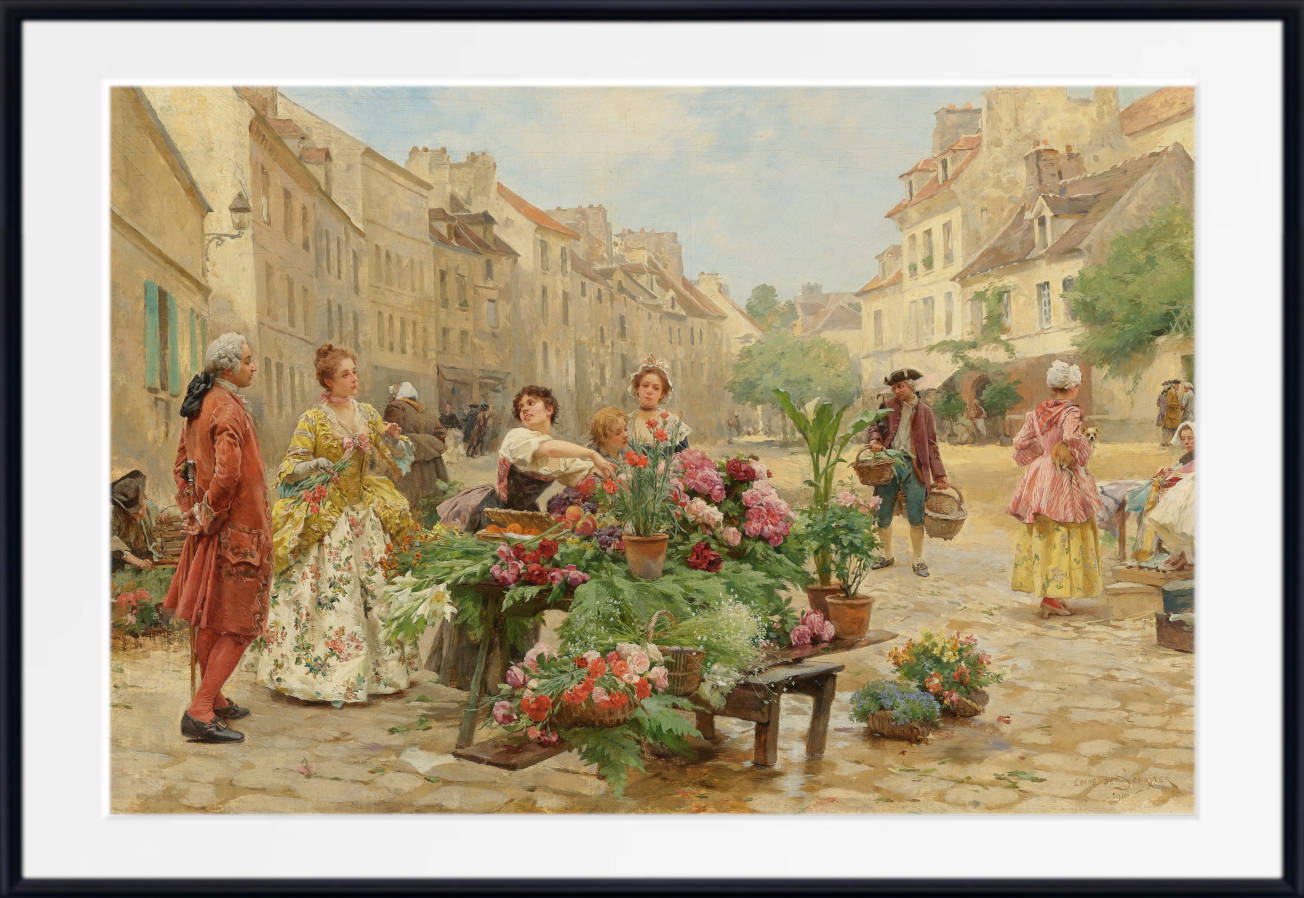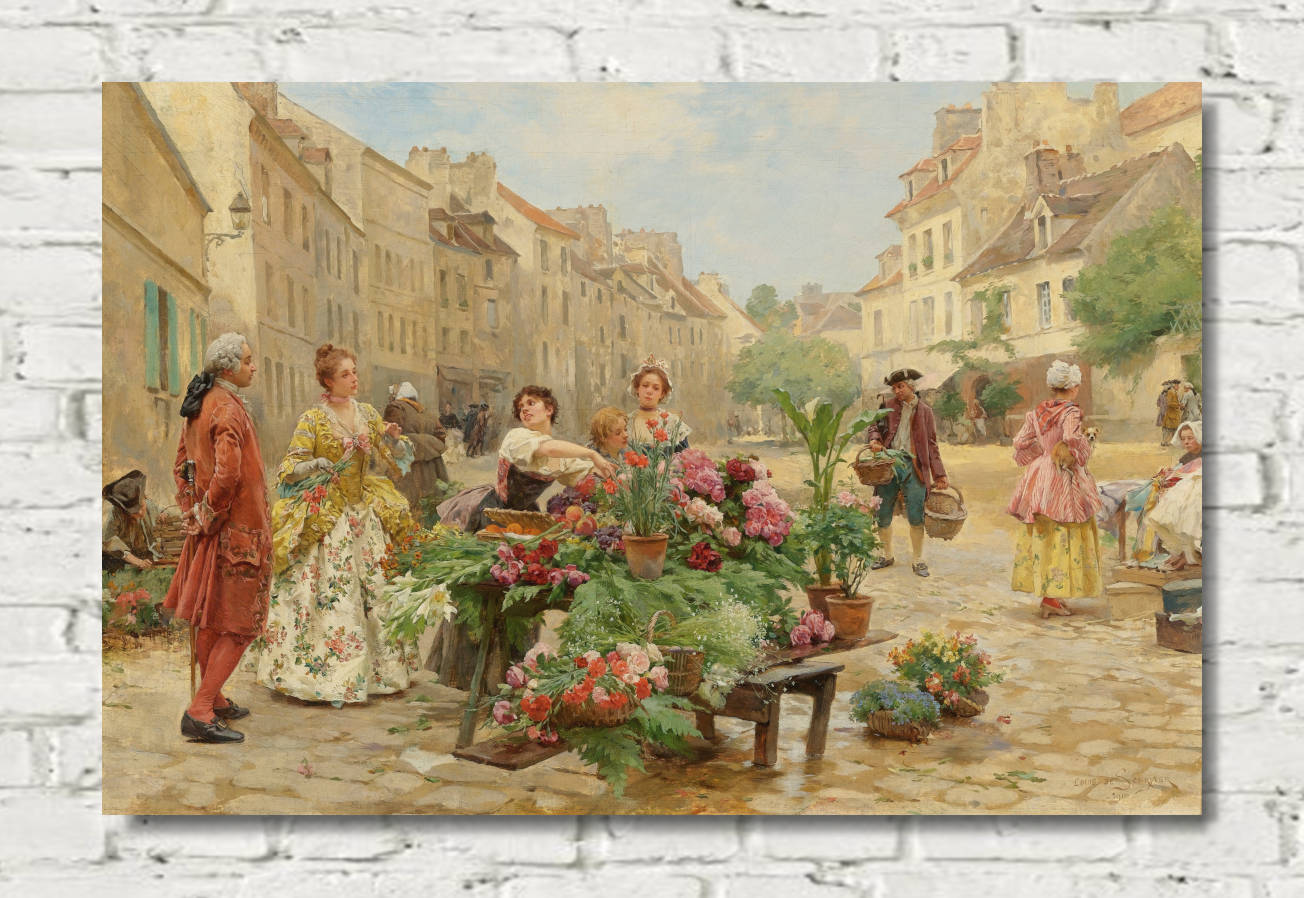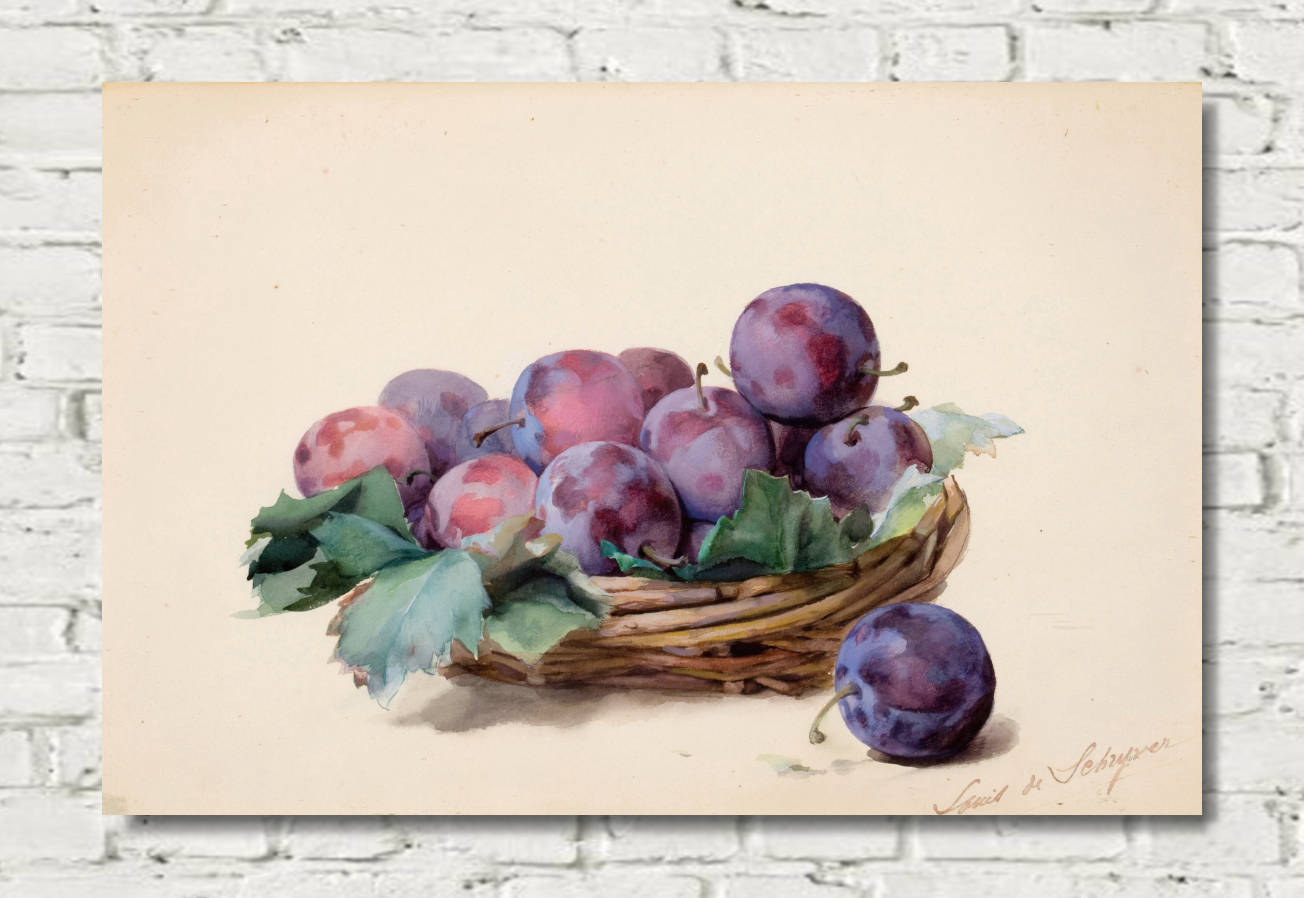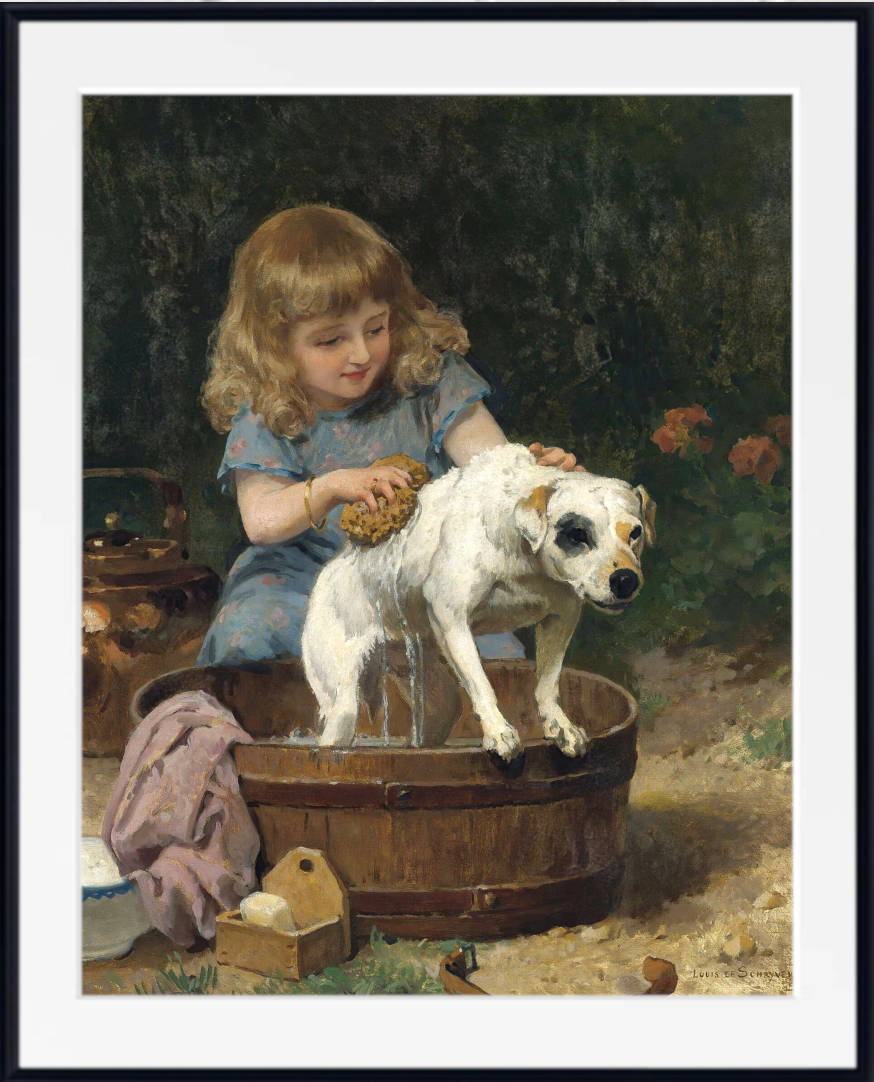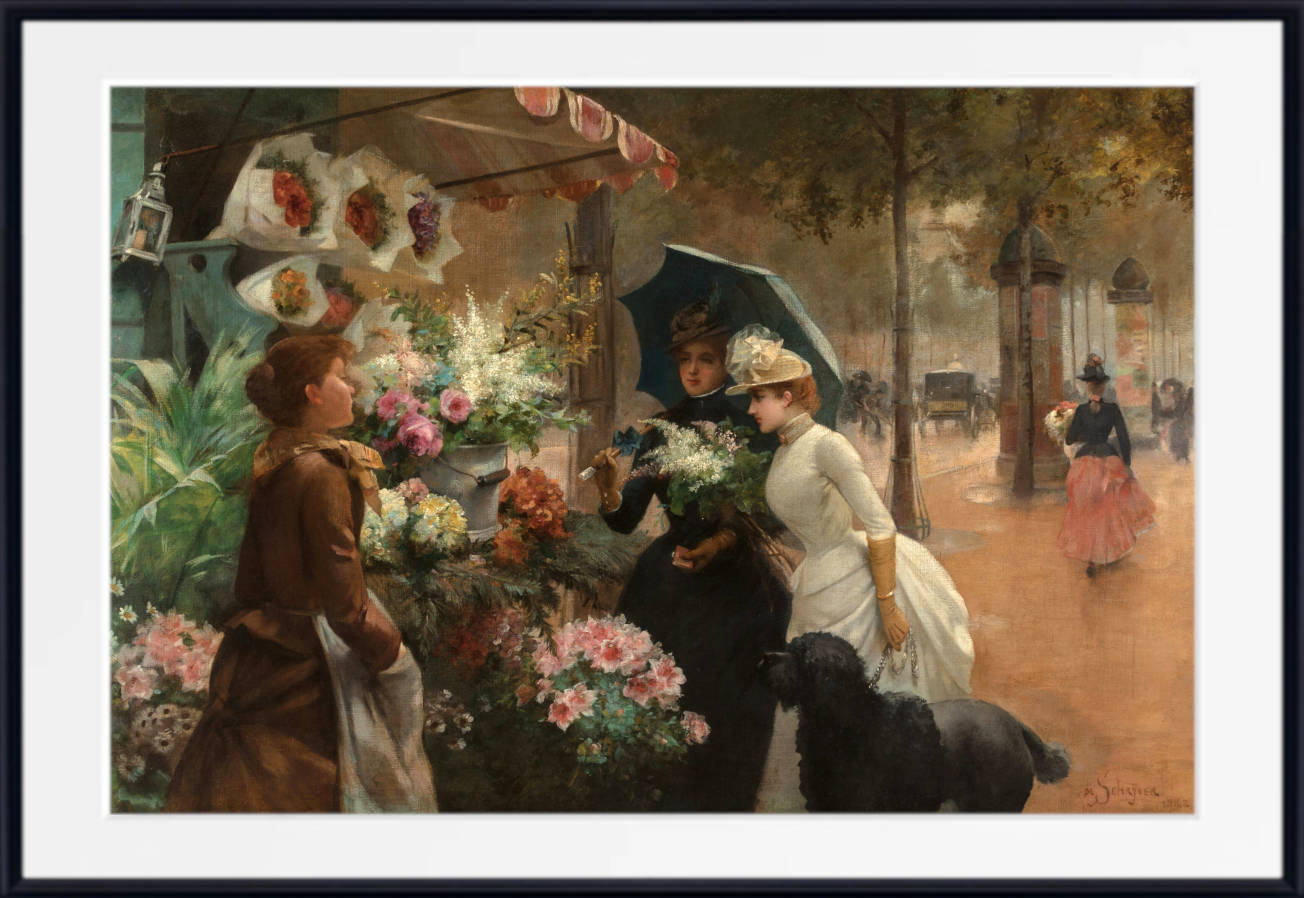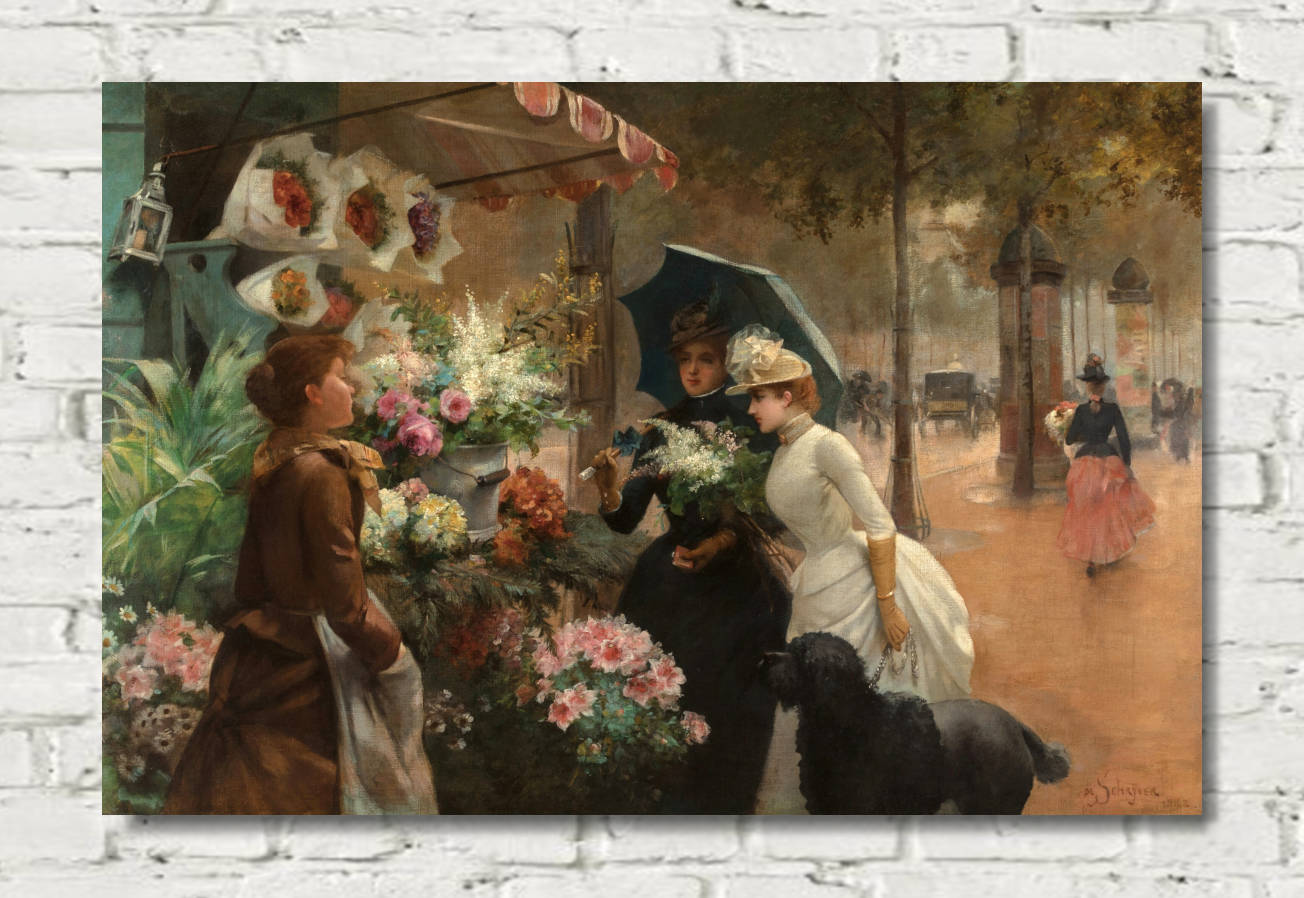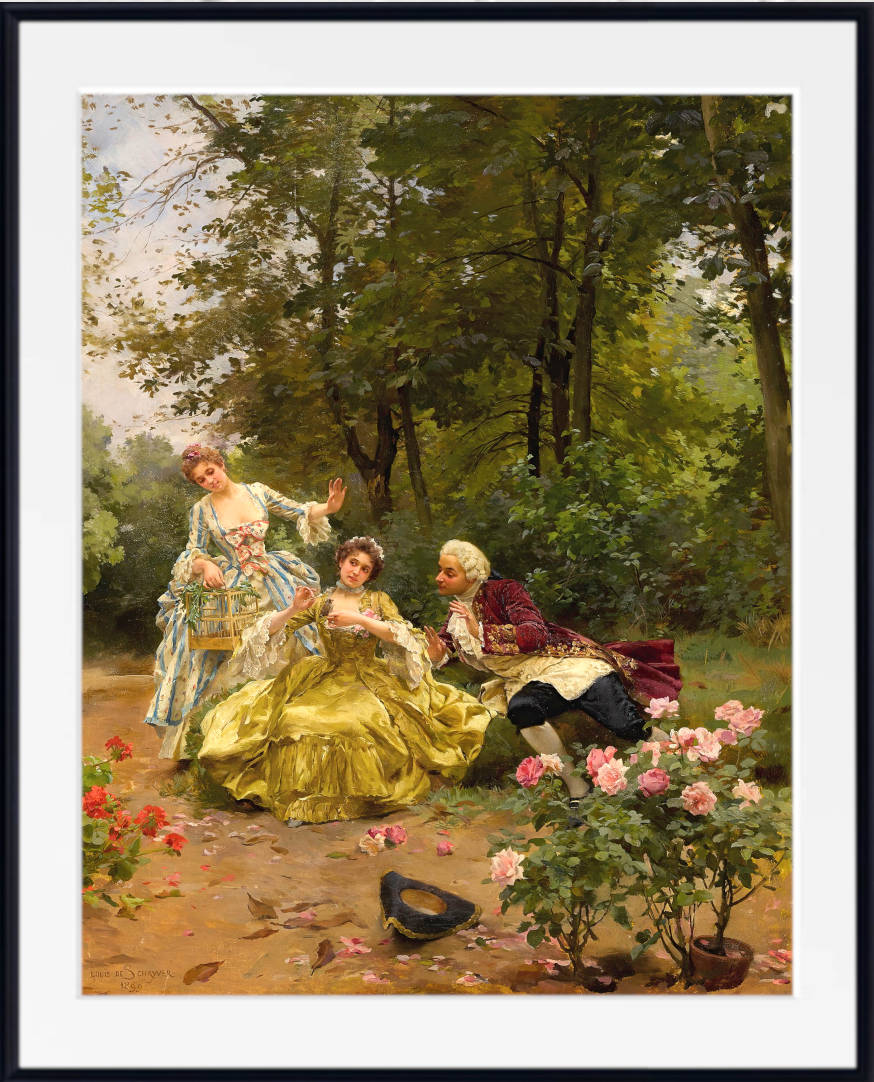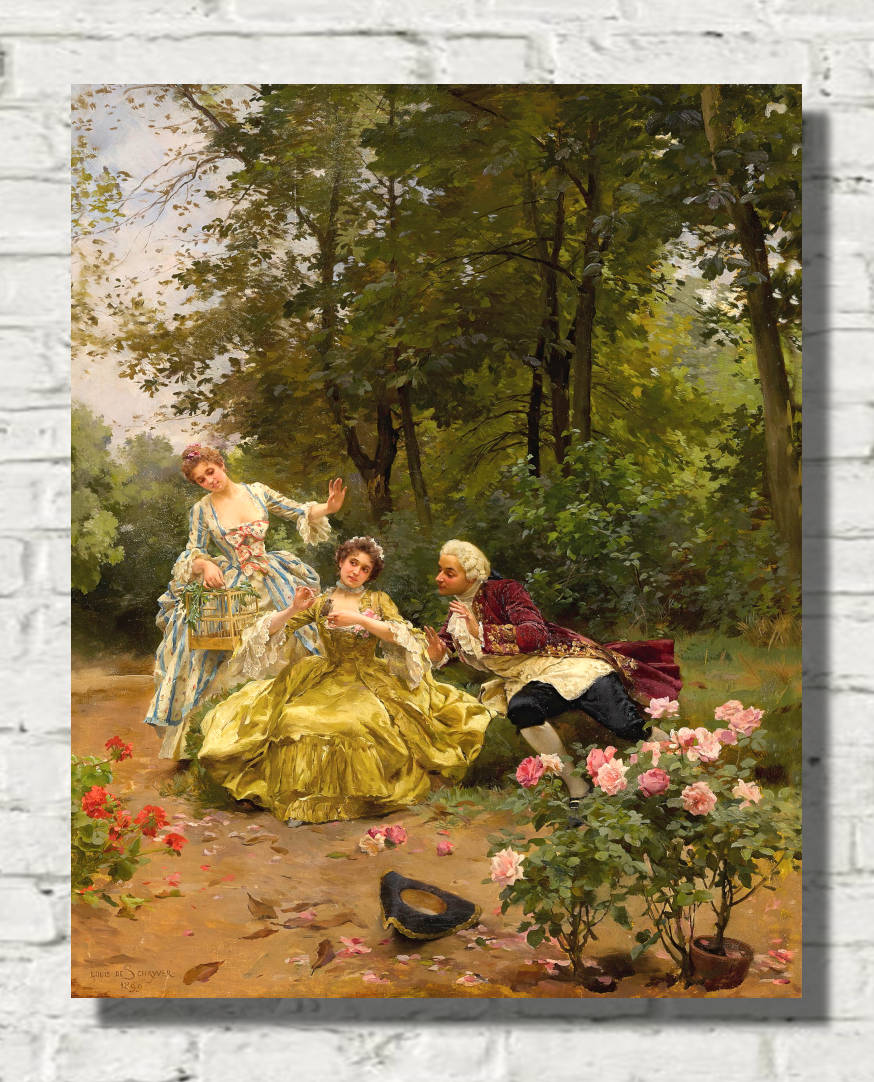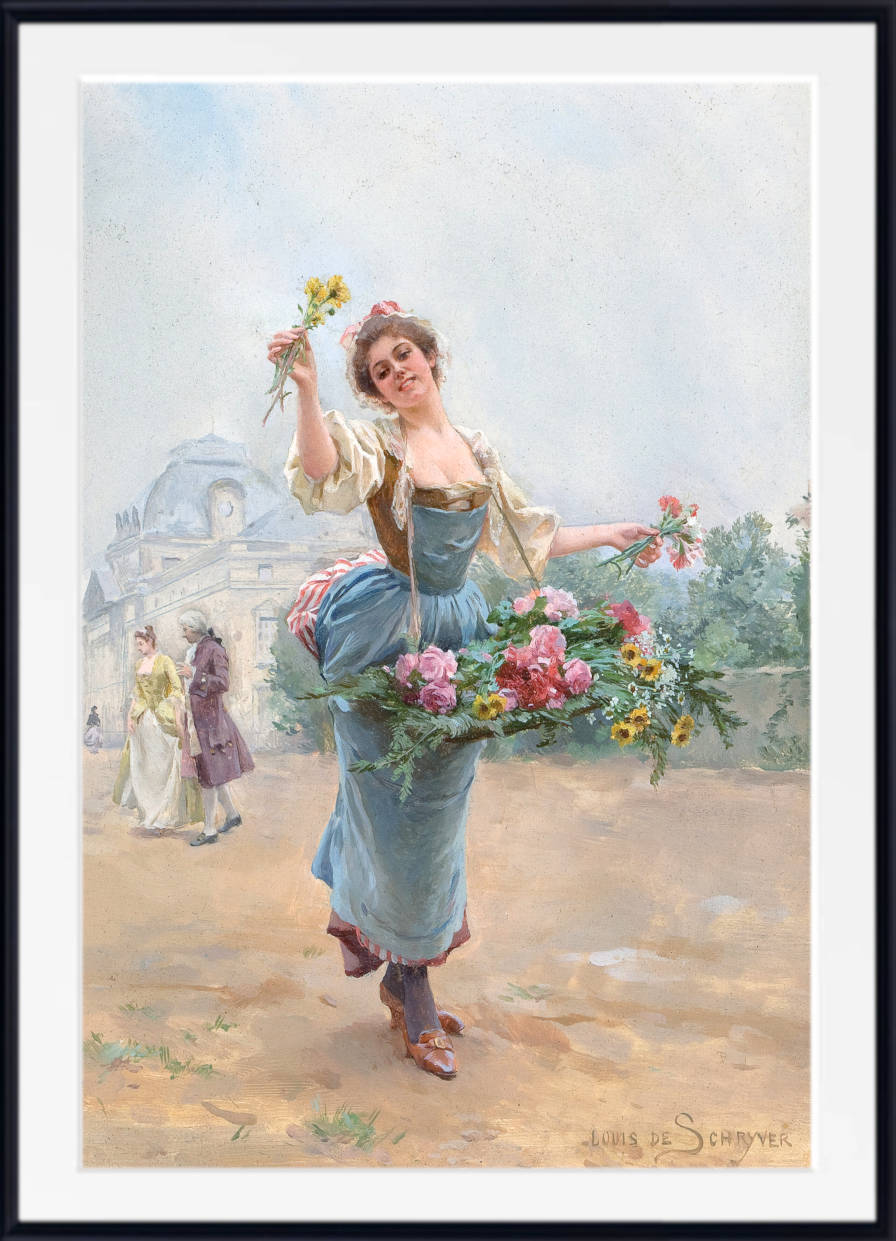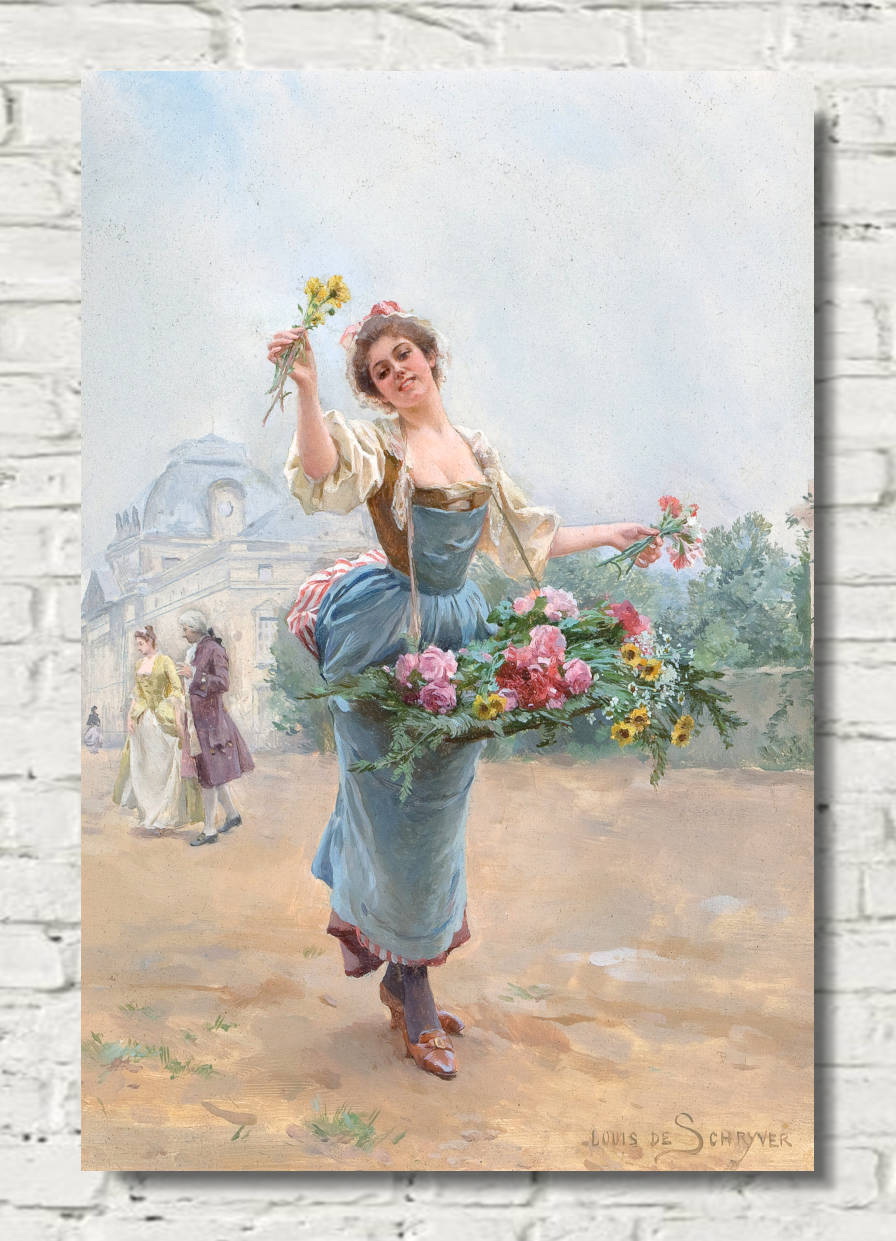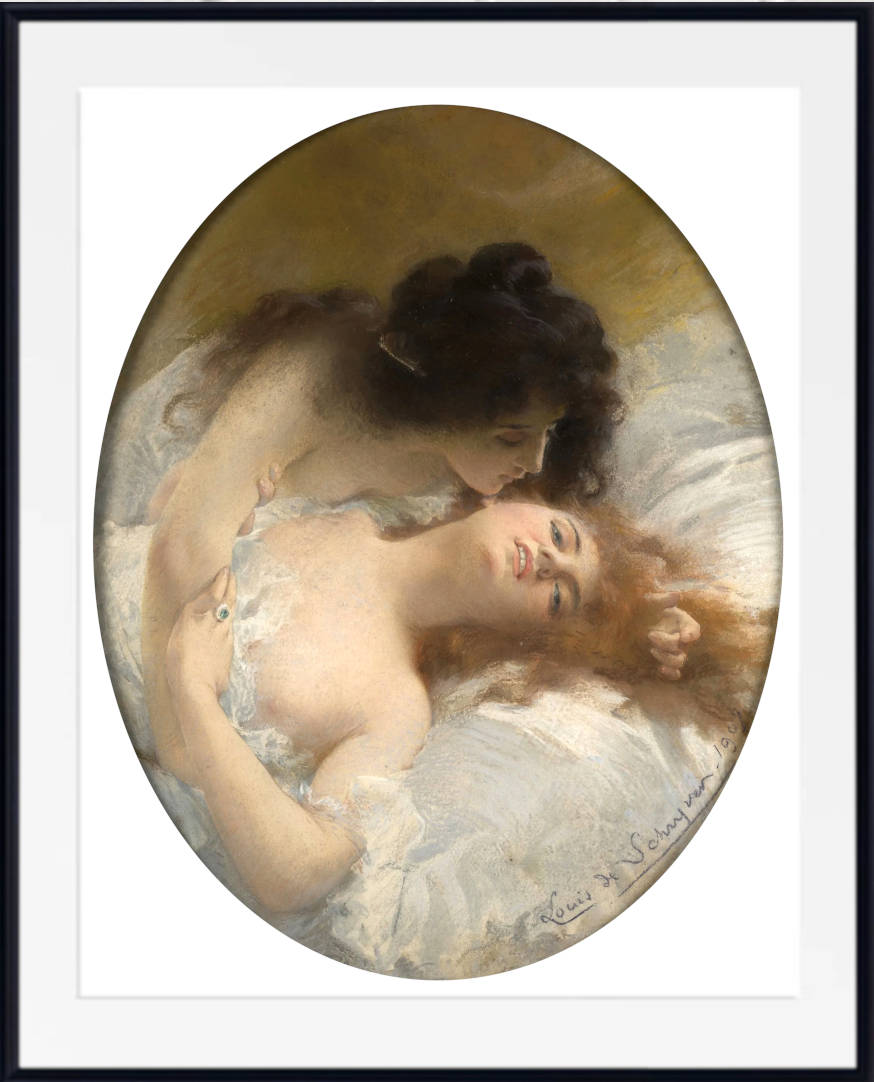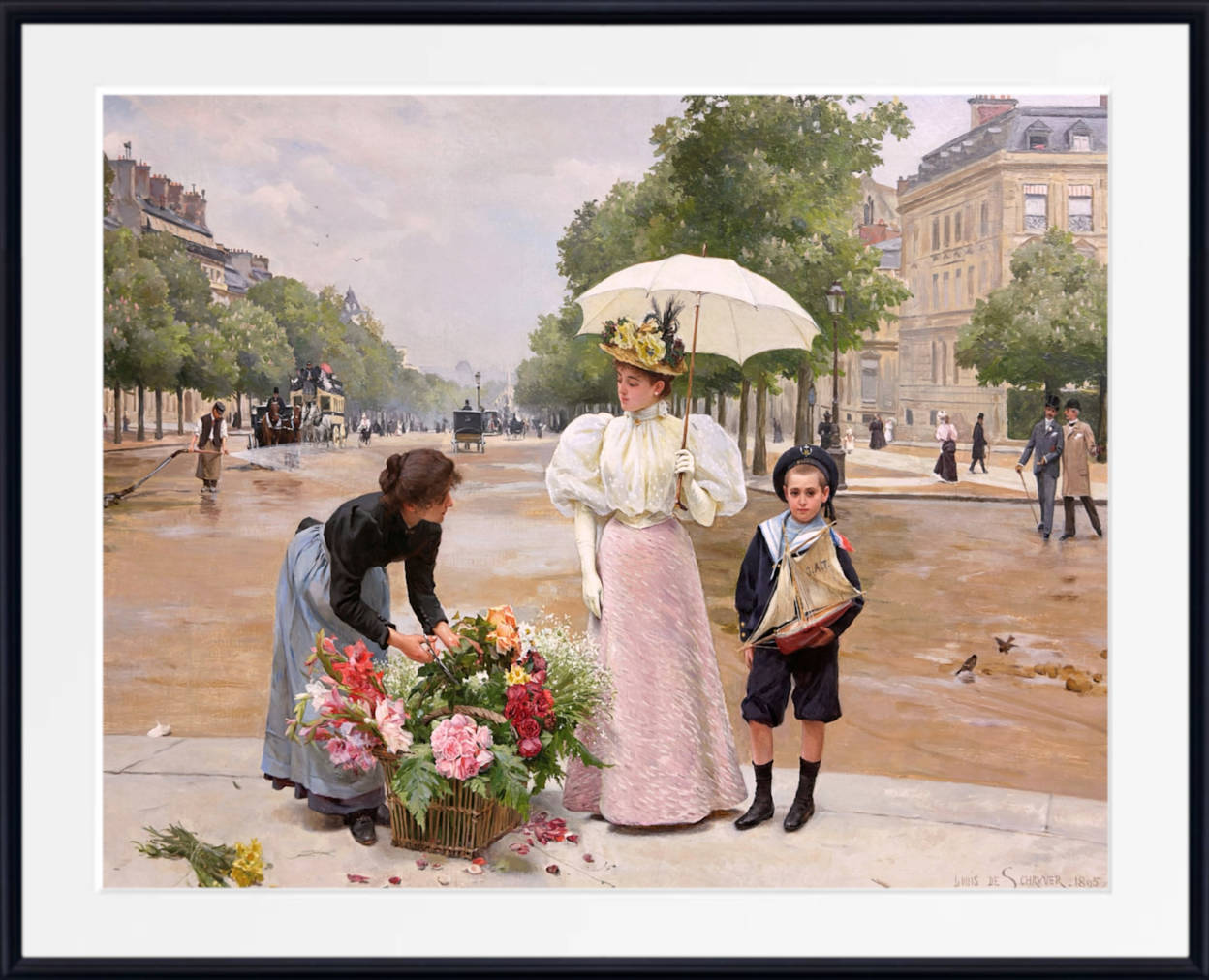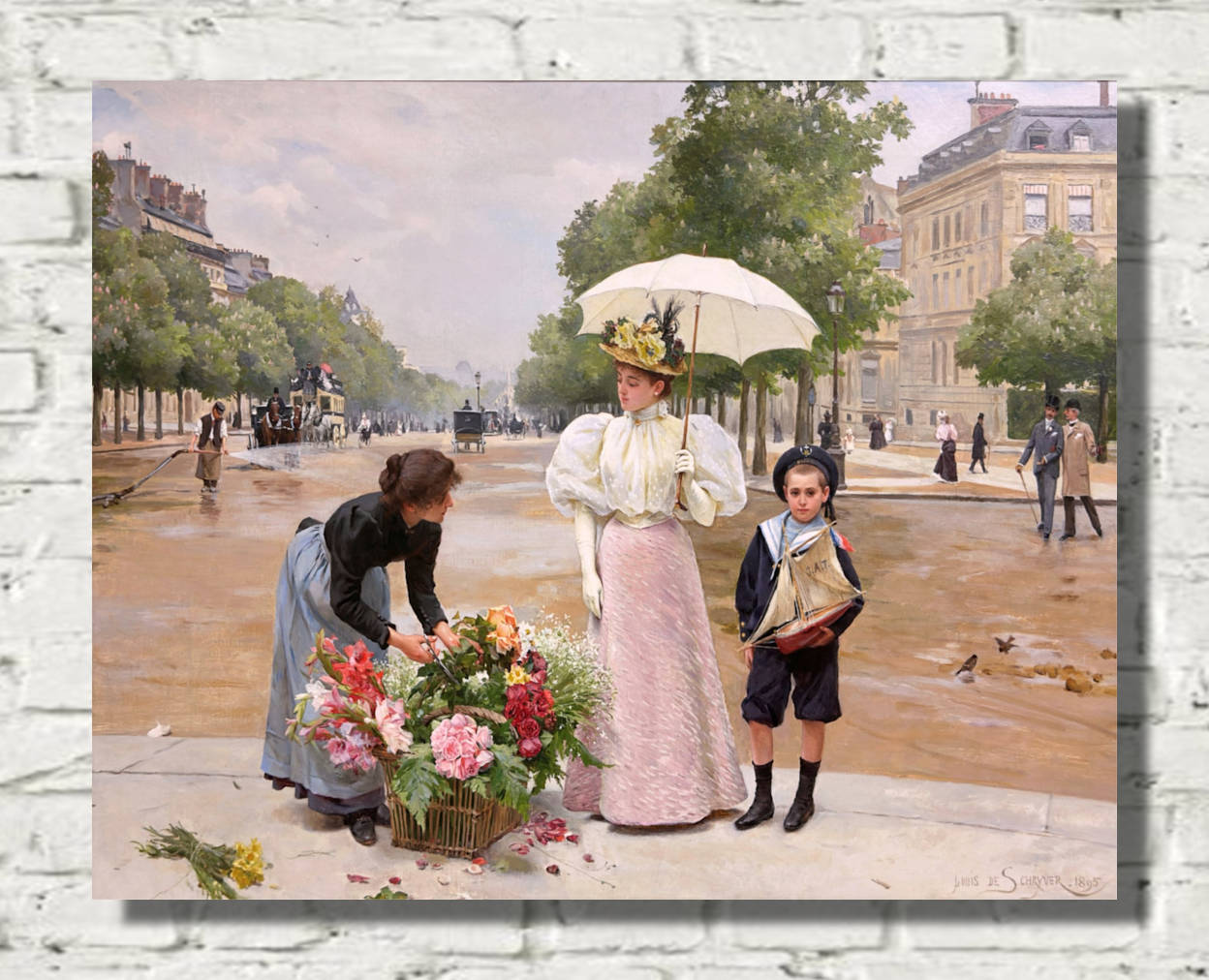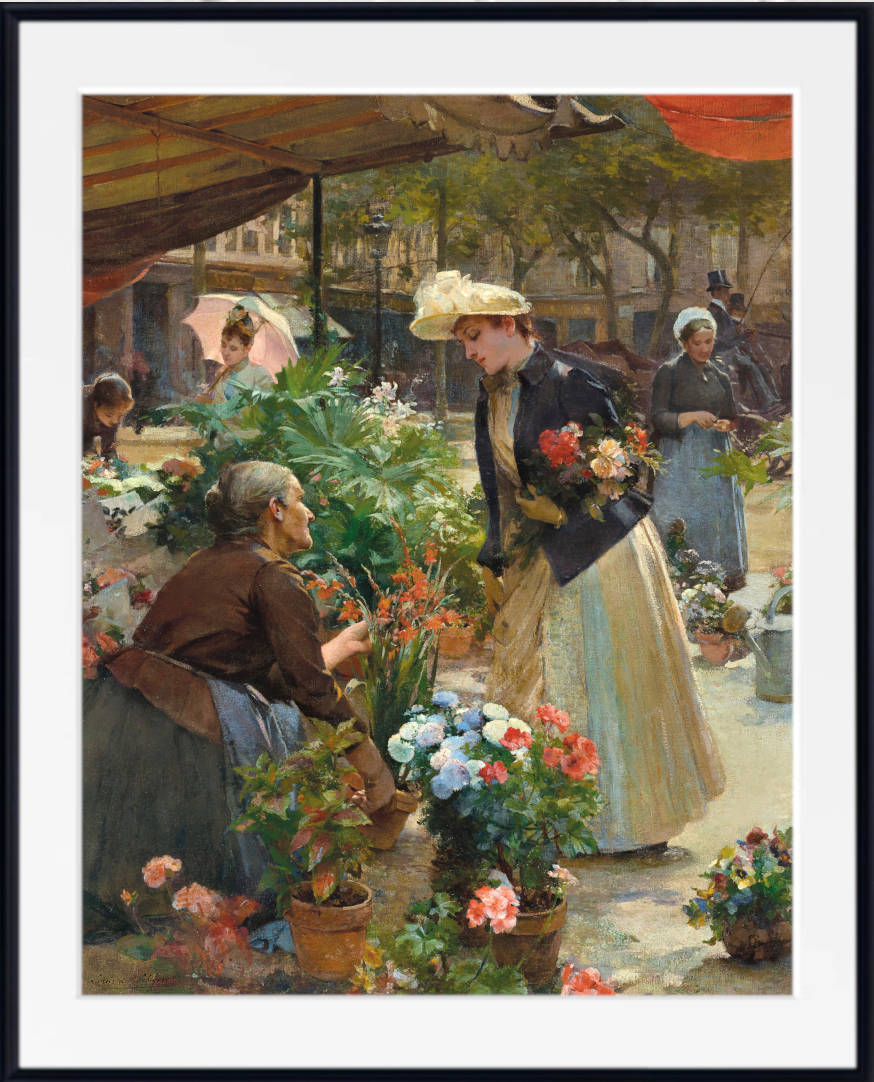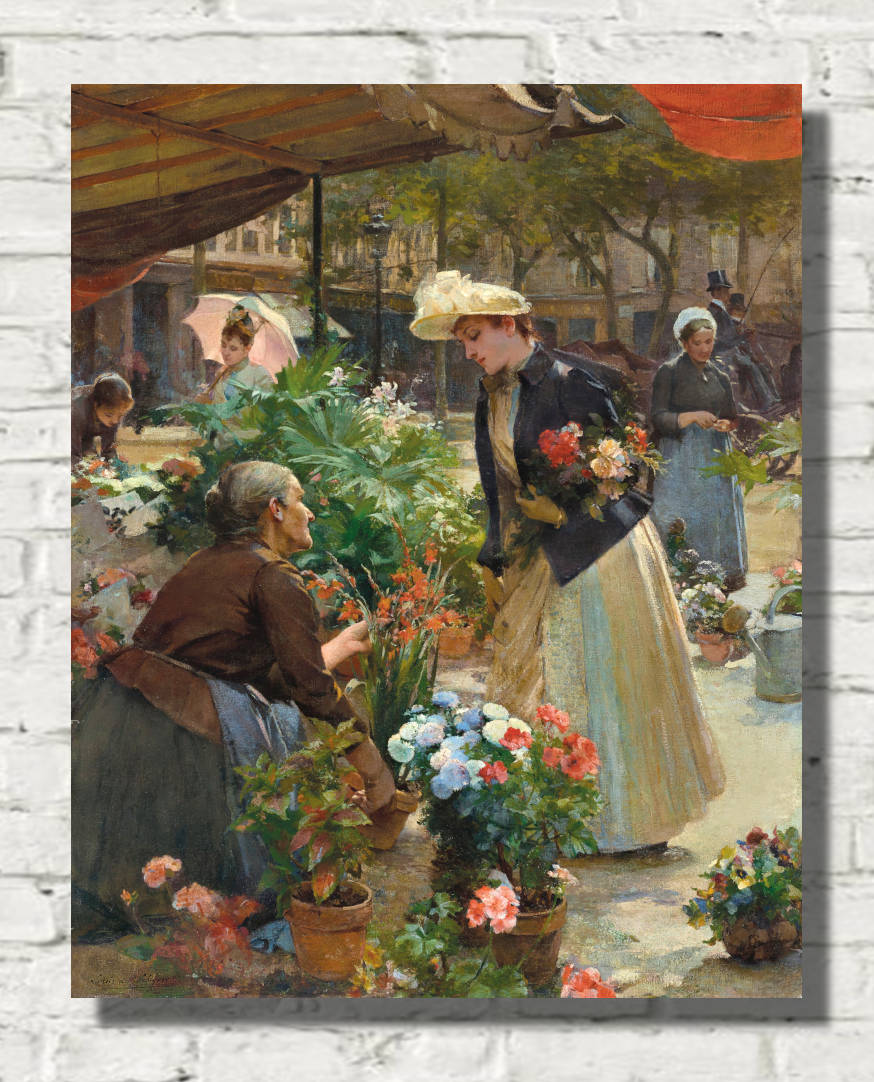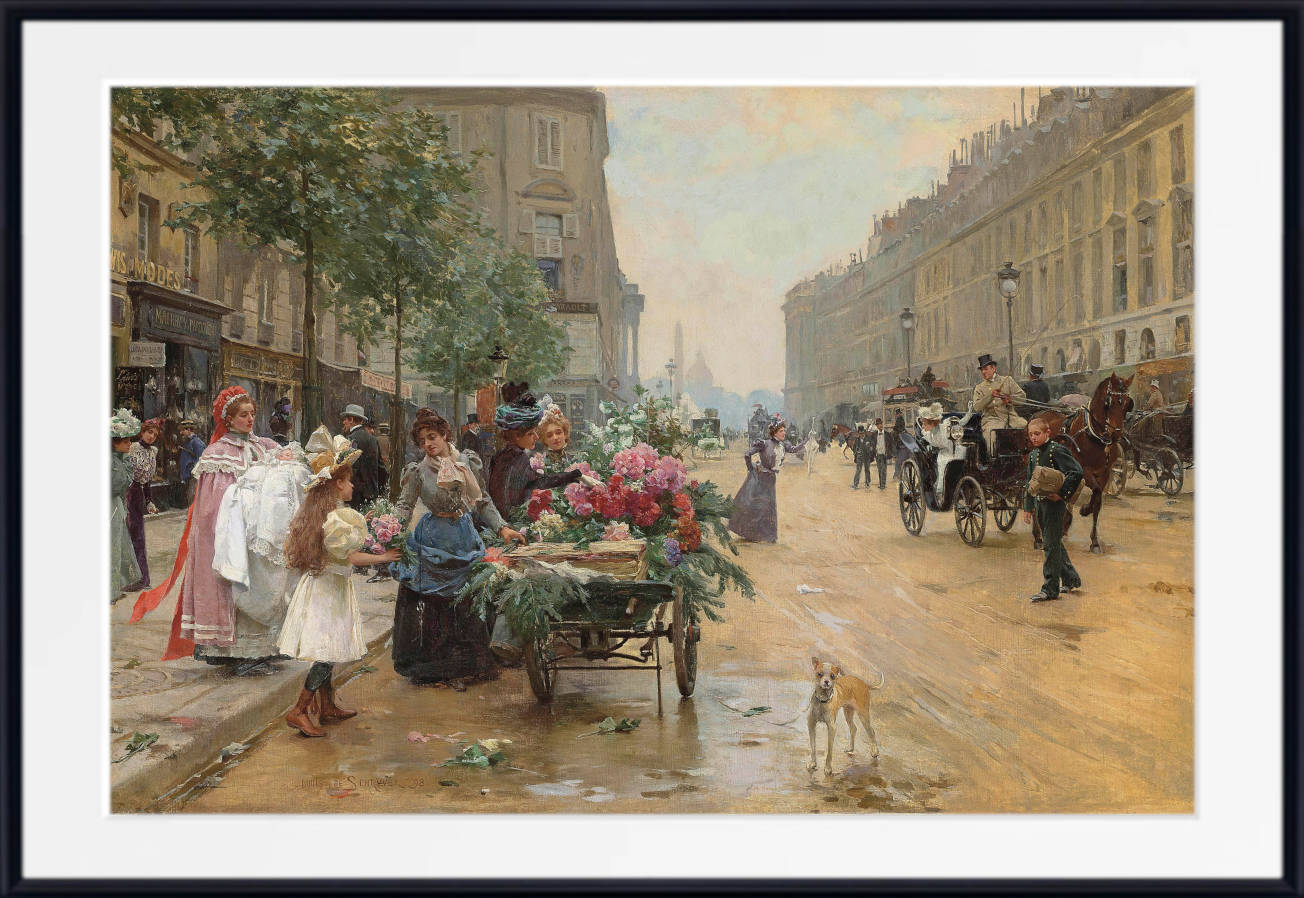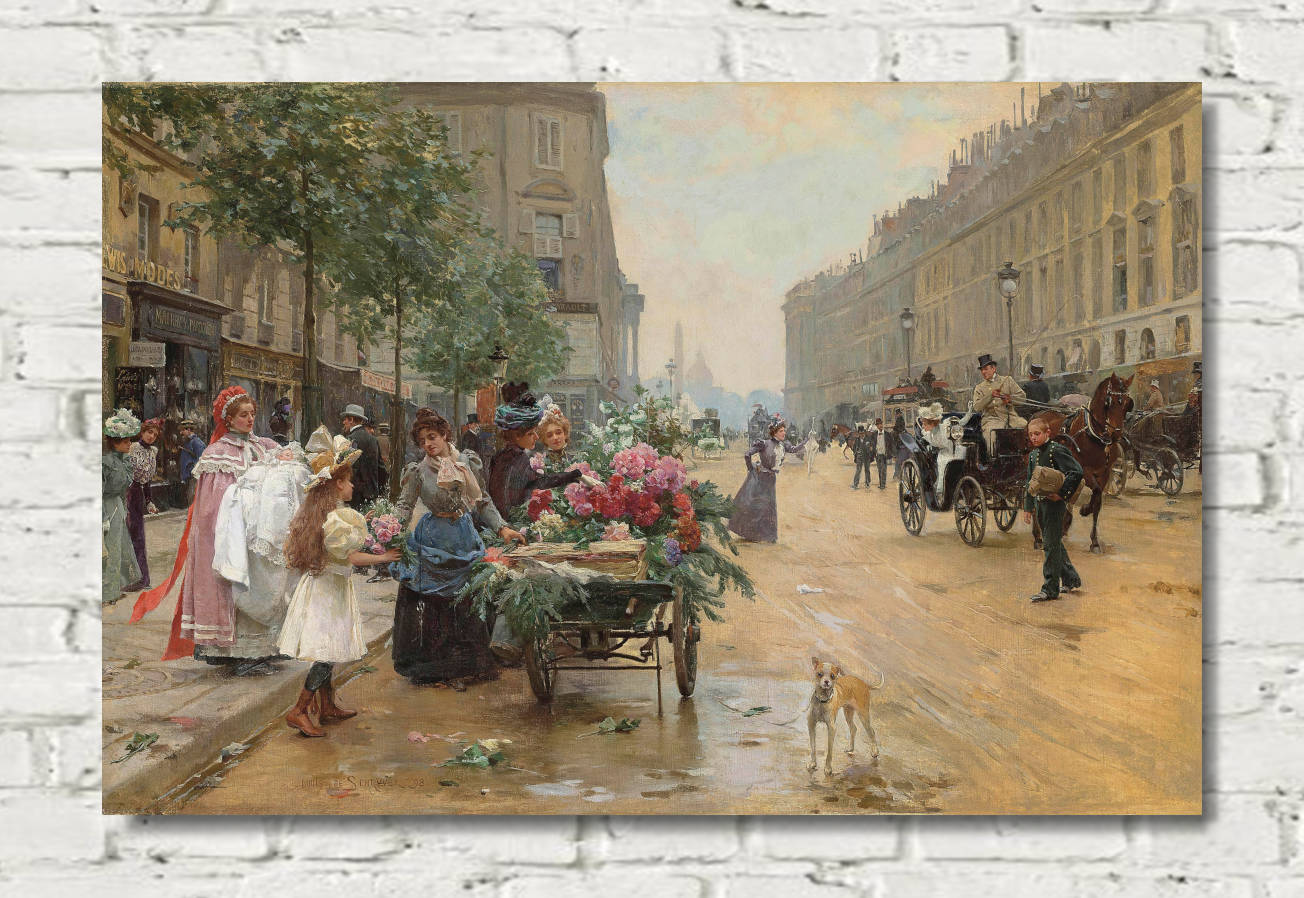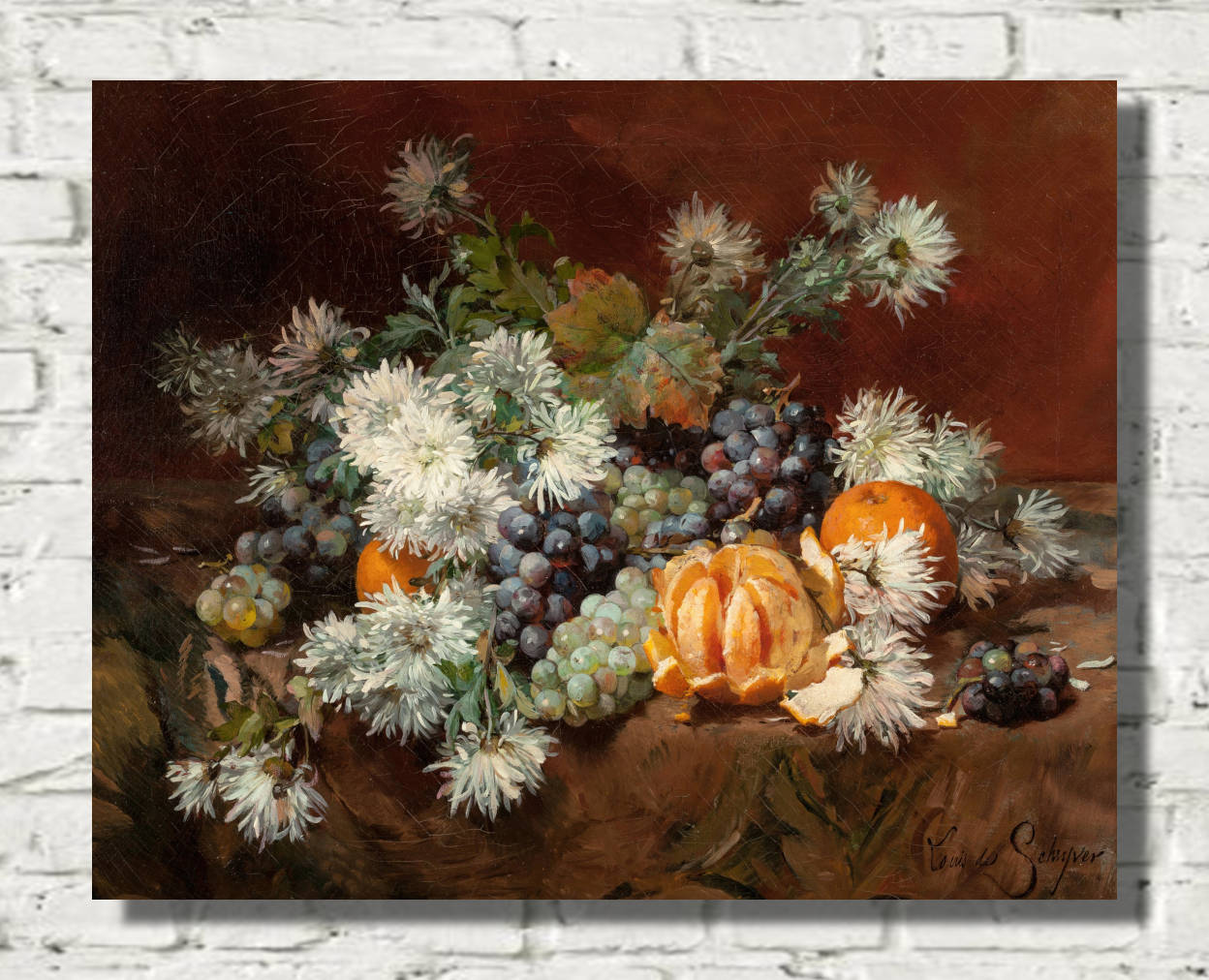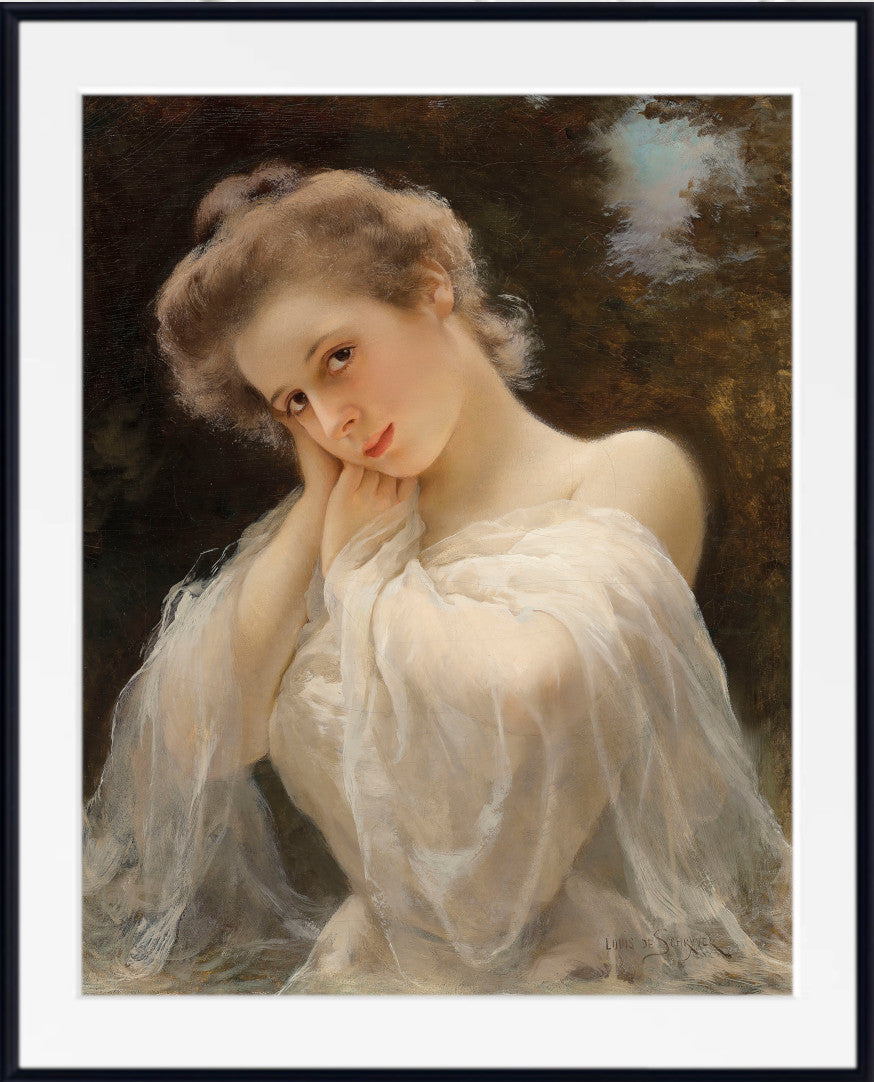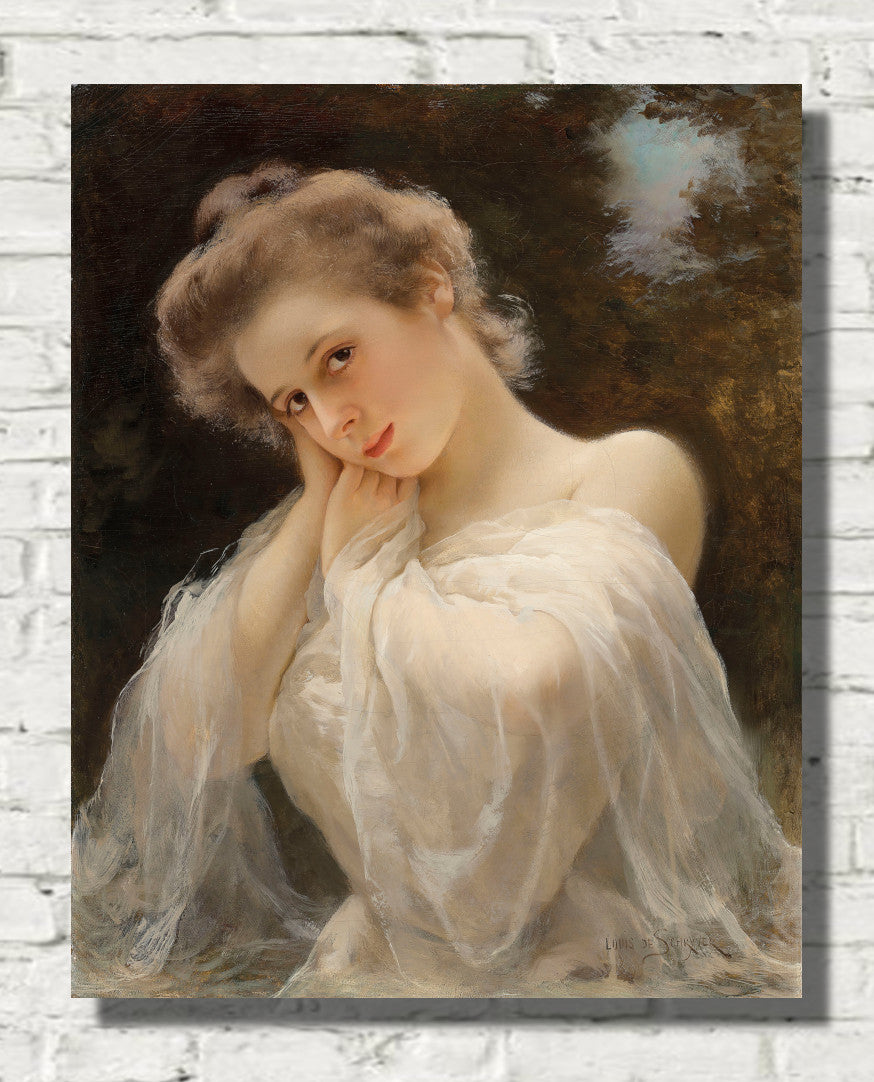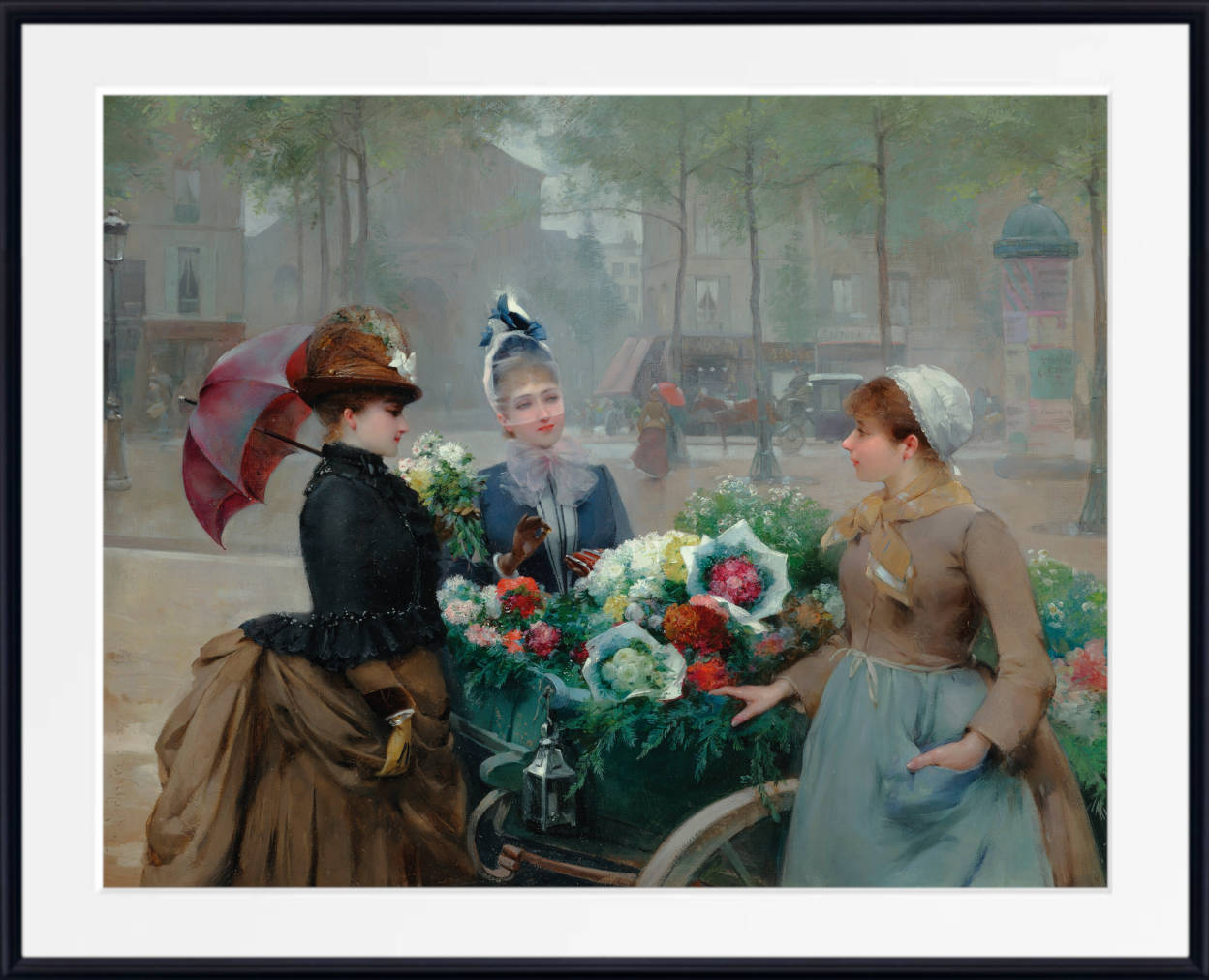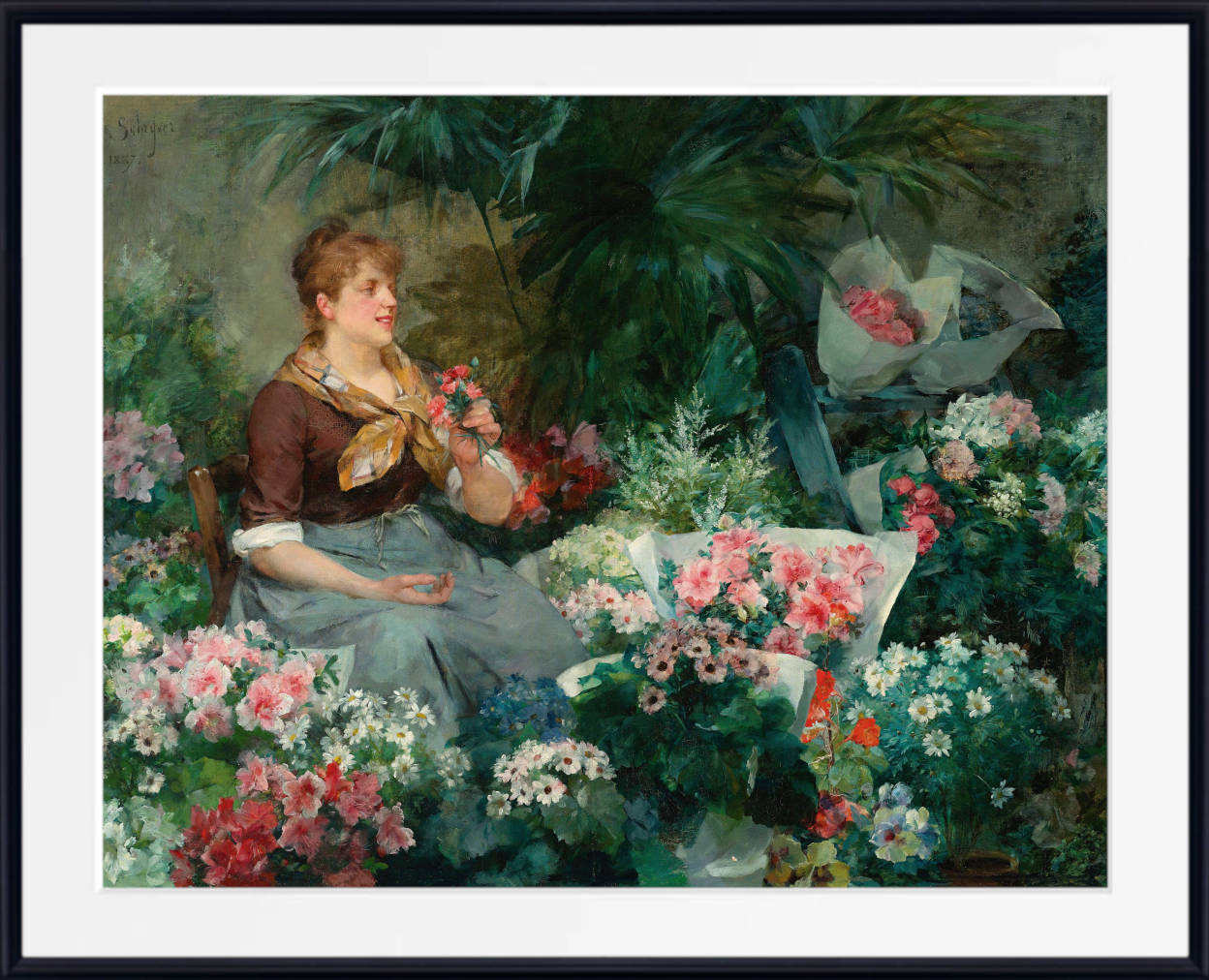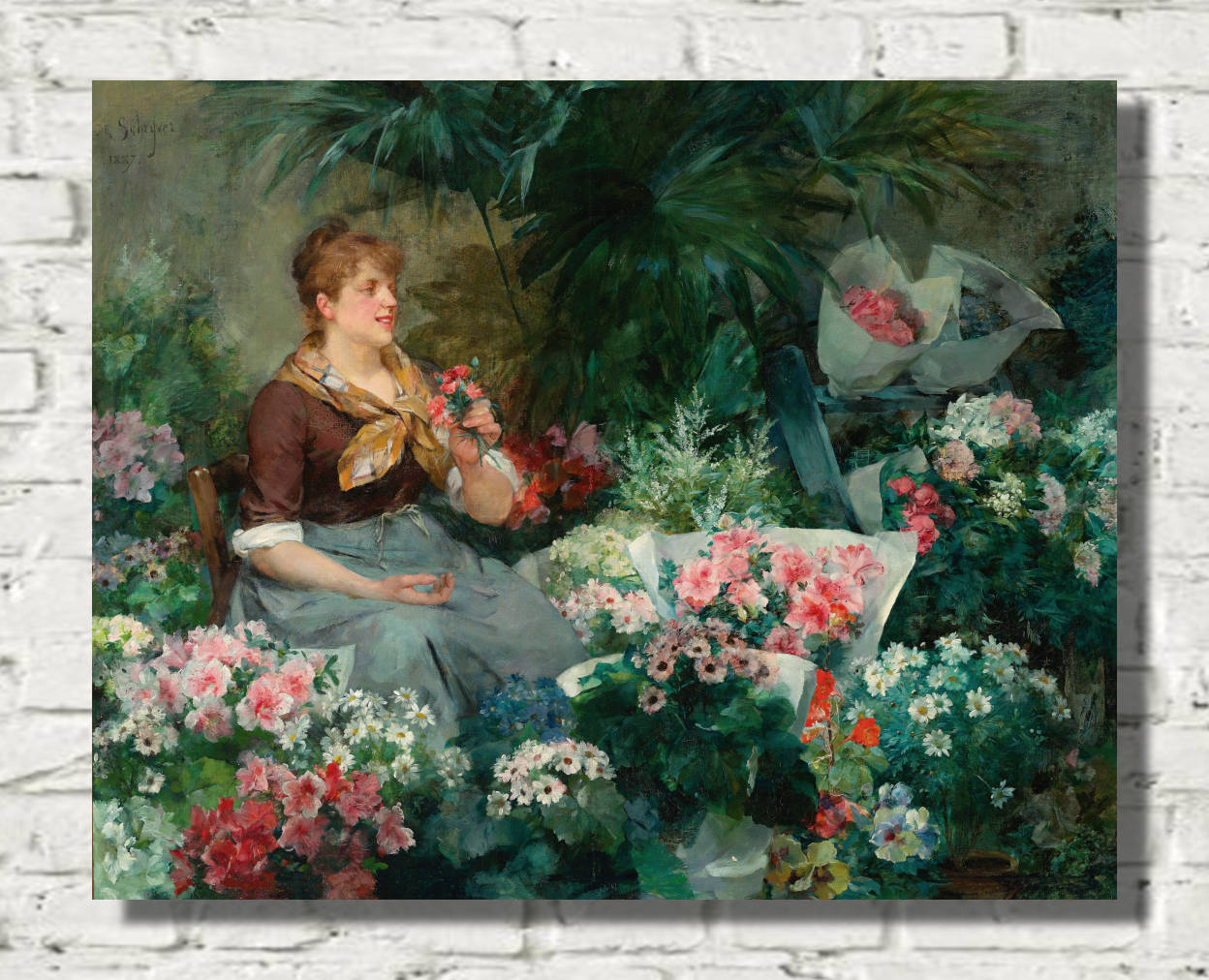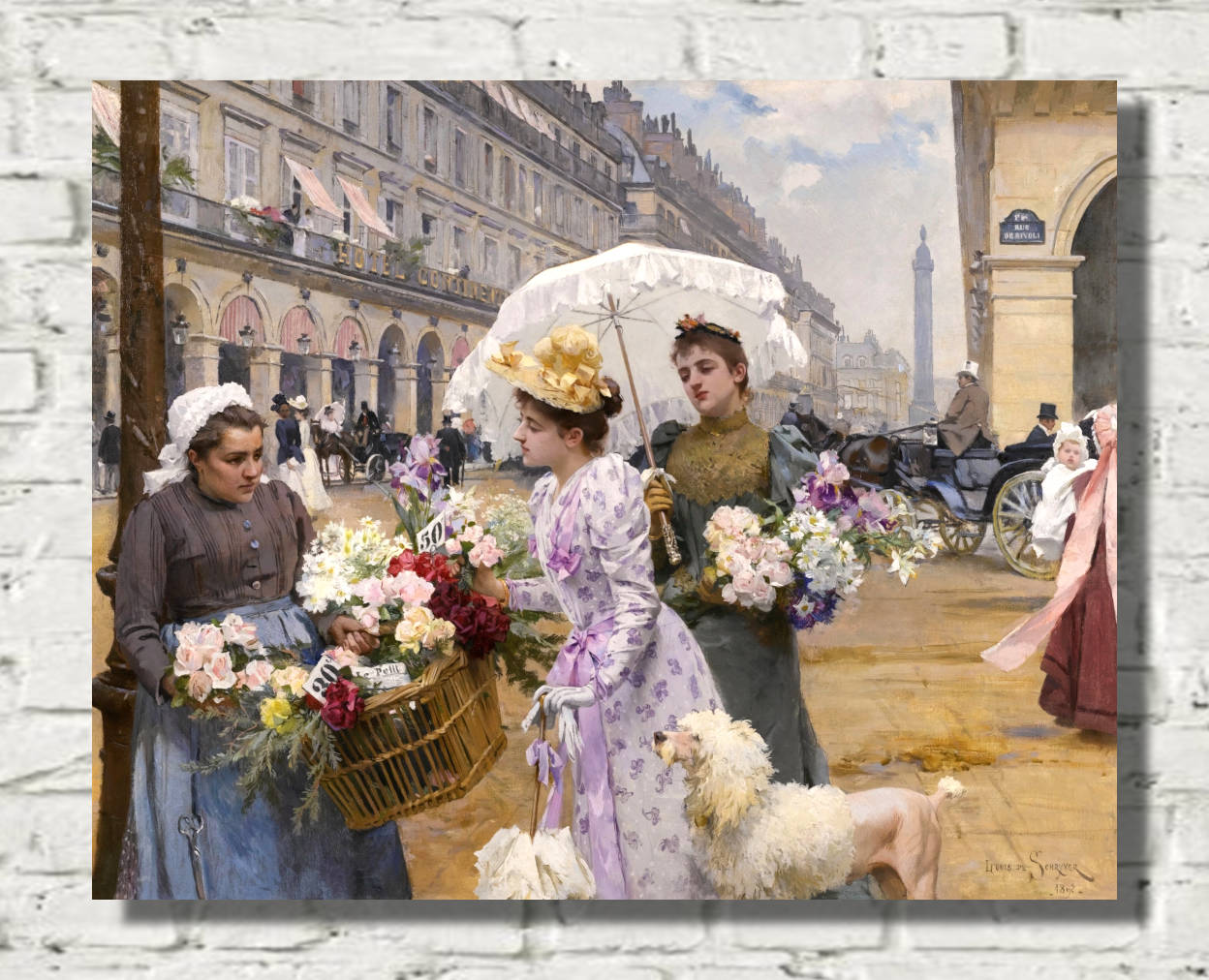Table of Contents:[hide]
Louis Marie de Schryver (1862-1942) was a French painter who captured the elegance and vitality of Parisian street life during the Belle Époque. Rising to prominence at an extraordinarily young age, de Schryver's artistic legacy is defined by his vibrant depictions of flower vendors, elegant carriages, and the bustling life along the grand boulevards of Paris.
Early Life and Artistic Development
Born in Paris in 1862, de Schryver showed remarkable artistic talent from an early age. He made his debut at the Paris Salon at just thirteen years old in 1876, an achievement that marked him as a prodigy among his contemporaries. His early success established him as one of the youngest artists ever to exhibit at this prestigious venue.
De Schryver studied under Philippe Rousseau, though he developed his distinctive style largely through independent observation and practice. His early works demonstrated a remarkable ability to capture the atmosphere and energy of Parisian street scenes, particularly focusing on the flower markets and vendors that would become his signature subjects.
Artistic Style and Themes
De Schryver's work is characterized by several distinctive elements:
- Masterful handling of light and atmospheric effects
- Rich, vibrant color palettes
- Precise attention to architectural detail
- Dynamic composition featuring multiple figures
- Integration of nature (flowers) with urban settings
His paintings provide a valuable historical record of Parisian life during the Belle Époque, documenting fashion, architecture, and social customs of the period with remarkable accuracy.
Notable Works
L'avenue des Champs-Élysées (1895)
This masterpiece exemplifies de Schryver's mature style at its finest. The painting captures the grandeur of Paris's most famous avenue during the height of the Belle Époque. The artist demonstrates his masterful ability to render atmospheric perspective, with the Arc de Triomphe visible in the misty distance. The foreground is populated with elegantly dressed figures, horse-drawn carriages, and the characteristic flower vendors that appear throughout his oeuvre.
The composition is particularly notable for its handling of light, with dappled sunshine filtering through the avenue's famous rows of trees. The painting showcases de Schryver's technical excellence in rendering multiple elements: architecture, figures, vegetation, and atmospheric effects, all unified in a harmonious whole.
Les Lesbiennes (1907)
One of de Schryver's more controversial works, "Les Lesbiennes" represents a departure from his typical street scenes. This intimate interior scene demonstrates the artist's ability to handle more complex psychological subject matter. The painting showcases two women in an elegantly appointed Parisian apartment, their pose and interaction suggesting both emotional and physical intimacy.
The work is notable for its sophisticated use of color and light, with rich burgundies and deep blues creating an atmosphere of intimacy and mystery. The painting demonstrates de Schryver's mastery of interior scenes, though these were less common in his oeuvre than his famous street views.
The Dreamer
"The Dreamer" represents yet another facet of de Schryver's artistic range. This contemplative work features a young woman in period dress, lost in thought as she gazes out of a window. The painting is remarkable for its psychological depth and the artist's ability to capture a moment of quiet introspection.
The work demonstrates de Schryver's masterful handling of light, with soft natural illumination falling across the subject's face and figure. The careful attention to the texture of fabrics and furnishings shows his technical virtuosity, while the emotional resonance of the piece reveals his deeper abilities as a painter of human nature.
Artistic Legacy
De Schryver's influence on French art extends beyond his immediate contemporaries. His works provide an invaluable historical record of Parisian life during the Belle Époque, documenting not only the physical appearance of the city but also its social atmosphere and cultural dynamics.
His paintings are now housed in major museums worldwide and continue to command significant prices at auction. Recent sales at Christie's and Sotheby's have seen his works achieve prices well into six figures, reflecting their historical importance and enduring appeal to collectors.
Technical Approach
De Schryver's technique was characterized by:
- Careful preliminary sketches and studies
- Multiple layers of paint to achieve atmospheric effects
- Precise brushwork for architectural details
- Looser, more impressionistic handling for vegetation and flowers
- Strategic use of impasto for highlights and texture
Market Performance and Recent Auction Results
De Schryver's market has shown remarkable strength in recent years:
Notable Recent Sales
- "Marché aux Fleurs" (2023)
- Sotheby's Paris
- Realized: €876,000
- Previous estimate: €400,000-600,000
- Set new auction record for the artist
- "La Place de la Madeleine" (2022)
- Christie's London
- Realized: £645,000
- Significant increase from 2015 sale price of £320,000
- "Elegant Figures on the Champs-Élysées" (2021)
- Bonhams New York
- Realized: $725,000
- Nearly doubled pre-sale estimate
Related Articles
Images of Paris
Masters of The Seine
References
- Whiteley, Linda. "Louis Marie de Schryver: Master of the Parisian Street Scene." Burlington Magazine, vol. 145, no. 1208, 2003, pp. 681-683.
- Christie's. "Louis Marie de Schryver (1862-1942): A Parisian Spring." Sale 2546, Lot Essay, 2018.
- Sotheby's. "European Art Masters: Louis Marie de Schryver." Auction Catalogue, 19th Century European Art, 2015.
- Bascou, Marc. "La Belle Époque: Art and Life in Paris 1880-1910." Metropolitan Museum of Art, 2007.
- Weisberg, Gabriel P. "The Independent Realists: Art and Society in France 1870-1900." Yale University Press, 2001.
- Herbert, Robert L. "Impressionism: Art, Leisure, and Parisian Society." Yale University Press, 1988.
- National Gallery of Art. "Belle Époque: French Paintings from the Era." Exhibition Catalogue, 2012.
- Musée d'Orsay. "Louis Marie de Schryver: Archives and Collections." Institutional Records, Paris.








